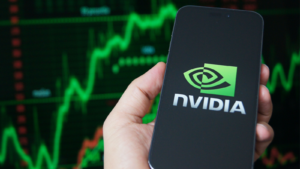Treasure Hunt: 3 Metaverse Stocks Wall Street Hasn’t Discovered Yet
After a couple of rough years during which the sector underwent extensive restructuring, smart investors are once again paying attention to metaverse stocks.
Due to higher spending and focus on AI, investors tend to ignore the metaverse, but the market is too substantial to ignore, expected to be worth about $116.74 billion in 2024 and $669.96 billion by 2029, growing at a rate of 41.83% per year. McKinsey & Company estimates a $5 trillion metaverse economy by 2030.
Part of the allure of metaverse stocks is that the concept has several use cases; for example, the U.S. military and government are studying metaverse applications, including augmented reality training simulations.
At the same time, for companies, the metaverse concept is still relevant post-pandemic, considering the secular growth in the work-from-home trend; roughly 12.7% of full-time employees globally work from home and more remote work means the metaverse can be crucial to future workflow management.
However, since this is still a developing sector, it’s best to select metaverse stocks with solid analyst ratings, healthy financials, diversified portfolios, and healthy upside potential.
NVIDIA (NVDA)

NVIDIA (NASDAQ:NVDA) is a pick-and-shovel play for those interested in purchasing metaverse stocks, commanding a dominant 88% market share in the discrete GPU market.
NVDA powers virtual and augmented reality, and its diverse operating model gives investors peace of mind; NVDA is a “strong buy” stock with a 25% upside.
Besides the hardware Nvidia is offering, Nvidia’s Omniverse software helps create and test virtual environments in real-time. Recent Blender and Adobe integrations provide Omniverse’s functionality to millions more users. Blender supports USD, and Adobe’s Substance 3D simplifies material changes.
NVIDIA has also teamed up with several big names to promote metaverse technology. For instance, Lockheed Martin (NYSE:LMT) practices wildfire response using Omniverse. Omniverse helps SHoP Architects collaborate on building plans in real-time and create gorgeous visualizations.
In addition, NVIDIA leads neural graphics, which blend AI with traditional images to speed up and improve virtual environments. Instant NeRF and other breakthroughs convert 2D images into 3D scenes, speeding up metaverse material creation.
Ultimately, due to its speed and low power consumption, RTX technology is easier for design, visualization, and AI-accelerated tool professionals. For example, the RTX 4000 SFF GPU from NVIDIA lets AR and VR apps draw and visualize at unparalleled speeds for compact computers, giving investors an additional point to invest.
Roblox (RBLX)

Roblox’s (NYSE:RBLX) new creator roadmap covers ways to make creating simpler and more immersive, containing new features and capabilities to improve platform development and user experience, making it a good pick among metaverse stocks, with a 15% potential upside.
In addition, Roblox released its Q1 2024 financial figures, which showed that its sales rose 22% year-over-year to $801.3 million. There were 19% more bookings, for a total of $923.8 million. Roblox recorded a net loss of $270.6 million, which is a little more than the same time last year, even though sales went up. However, the results mark the third time in a row RBLX went past Wall Street estimates, displaying post-pandemic robustness.
In addition, Ikea recently announced a new concept for employing virtual workers in its Roblox metaverse shop. In “The Co-Worker Game,” virtual laborers work in the café and showroom. London online jobs cost £13.15 per hour. This method aims to engage younger people and provide them with a digital shopping experience.
The NHL has also digitally constructed the 2024 All-Star Game in Roblox, the first major sports league to do so. Fans may engage with the game in a 3D virtual environment, improving the viewing experience and attracting more fans to the sport and Roblox.
Microsoft (MSFT)

Through its AI Cloud Partner Program, Microsoft (NASDAQ:MSFT) puts the industrial metaverse first. This project makes AI and engaging tools for business use better, with the Internet of Things, AI, mixed reality, and digital twins serving as important components. Solutions for the office include Dynamics 365, Azure Digital Twins, and HoloLens 2.
Also, Microsoft Dynamics 365 Guides uses creative AI to give real-time, relevant, and 3D help to support staff. This mix of advanced training and job management makes operations safer and more efficient.
Another thing that Microsoft and Meta did was make Mesh for Microsoft Teams work with Meta Quest tablets. People who use VR headsets can record conversations and work together. Microsoft 365 will make Meta Quest VR easier to use.
Additionally, Qualcomm (NASDAQ:QCOM), Magic Leap, and Microsoft are working on MRTK3, a platform that will help partners and users make MR systems better.
Azure is a key part of Microsoft’s plan for a metaverse. IoT, Azure Digital Twins, and Maps are all used to automate and improve how businesses work. MR glasses let Mesh for Teams users work together virtually. This service links real and virtual computers to make working from home easier.
On the date of publication, Faizan Farooque did not have (either directly or indirectly) any positions in the securities mentioned in this article. The opinions expressed in this article are those of the writer, subject to the InvestorPlace.com Publishing Guidelines.

